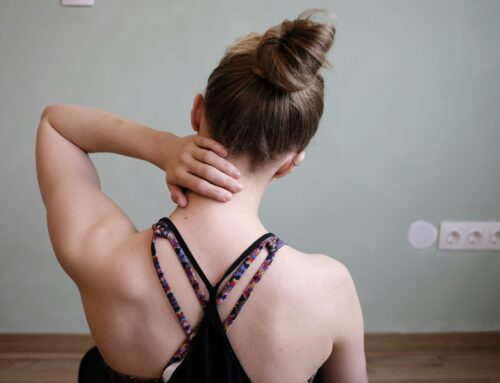**Disclaimer: I am not affiliated with any of the products mentioned in this blog. These are just a few of the many commercially available products on the market that I have either used or researched. Other products may be equally effective, and I do not guarantee the effectiveness of any of these devices.
Wearables like the Apple Watch, Fitbit, Garmin, Oura Ring, etc., are ubiquitous and can help you reach your health goals. They can track heart rate, heart rate variability, activity level, skin temperature, sleep, oxygen saturation levels, and more.
I myself love my Oura Ring; it’s great at tracking my monthly cycles, makes me feel good when I reach my daily activity goal and keeps me focused on getting enough sleep. Besides looking chic (which, let’s be honest, this is the main reason I chose the Oura Ring) and being unobtrusive, I also really like that it doesn’t tell me what to do. Compared to smartwatches, the Oura Ring doesn’t notify me of everything (calls, text messages, email notifications, etc.) and doesn’t buzz me to get up and move. You can ask my husband or my mother; I really do not like being told what to do.
However, I have always wondered:
How accurate are these devices?
Let’s dive in together!
Heart Rate: Wearables can accurately measure your heart rate (1). These devices are actually better than what you get in your doctor’s office simply because they track your heart rate throughout the day — including your resting heart rate first thing in the morning and your heart rate with activity. Both of which can provide valuable insights into your overall health.
Resting heart rate: The best time to measure your resting heart rate is first thing in the morning before you leave bed. A “normal” resting rate is 60–100 beats per minute; ideally, the lower the better. Stress, illness, anxiety, hormones, medications, and physical activity levels can all impact this rate, and an elevated resting heart rate can signify that there could be something wrong. Abrupt drops in your heart rate can also indicate possible problems; while well-trained athletes can have a resting heart rate in the 40s-50s, if your resting heart rate is usually in the 80s and then suddenly drops into the 40s, that could indicate something is wrong.
Exercising heart rate: Your target heart rate during exercise can help guide whether you are doing too much or not enough exercise. You can use wearables to help you track your exercise heart rate, although you can also do this manually by palpating your pulse. If you are new to exercise, start low (closer to 50% targeted HR Zone) and work your way gradually up.

Heart rate variability (HRV): HRV is the time fluctuations between your heartbeats and can reflect your overall health. These fluctuations are imperceptible and can only be picked up through monitoring devices.
Your heartbeats are controlled by your autonomic nervous system, which comprises the sympathetic nervous system (fight or flight) and the parasympathetic nervous system (rest and digest). The sympathetic system gets activated when we are stressed — this causes our heart rate to increase. When the heart rate is fast, the time between heartbeats is short, and there is less variability between the beats. On the other hand, the parasympathetic nervous system, supplied mainly by the vagus nerve, is active when we are rested, which causes our heart rate to decrease. When our heart rate is slower, there is more time between the heartbeats, and there can be more variability. You will, therefore, expect a higher HRV when you are rested and not stressed.
Generally, having a higher HRV reflects your body’s flexibility and adaptability to different conditions, which is good. A lower HRV may reflect that your body is less resilient and more stressed.
Wearables can be fantastic for following your HRV to see if you are under more stress and to track your progress in reducing stress (i.e., incorporating meditation or other interventions for stress reduction).
Arrhythmias: Many smartwatches have incorporated advanced cardiac monitoring, including ECG, and can be pretty good at determining if you have a heart arrhythmia like atrial fibrillation (3,4). Not all devices have this capability. You will want to consult your healthcare provider if you find a usual rhythm on your device.
Sleep: Many wearables accurately determine sleep duration and latency (how quickly it takes to fall asleep) (5–8). They can do this based on how much movement (or lack thereof) the device detects during sleep compared to how much movement you do during the day. However, they are not yet good at determining the stages of sleep, such as deep sleep and REM sleep. Wearables can, therefore, be great companions to help keep you accountable for prioritizing your sleep, but I would not use them to determine if you are getting “good quality” sleep. Tip: To minimize disruptions and potential EMFs, turn off the Wi-Fi and put your device in airplane mode while sleeping.
Blood oxygen: Some wearables have oxygen sensors, although the accuracy can vary. If your device is reading a sleep oxygen level below 90–94%, it is a good idea to be evaluated by a healthcare provider for any sleep disorders, such as sleep apnea.
Exercise/Activity: Most devices are pretty good at counting your steps (1,9–10), although accuracy can depend on the device, the location of the device, and the cadence of walking. As for determining your overall activity level, devices can vary widely. However, incorporating wearables can be a great addition to your fitness journey, especially if you are starting out. In a meta-analysis by Ferguson, activity trackers improved physical activity, body composition, and fitness levels, resulting in approximately 1800 extra steps per day, 40 minutes per day more walking, and weight reductions of about 1kg (11). Tip: if you do a lot of running or cycling, you will ideally want a device equipped with GPS tracking for better accuracy.
So, are wearables worth it?
I think wearables can be great additions to your health journey! These devices can help:
- Get you moving! Especially if you are starting on a fitness journey.
- Remind you to relax and de-stress. Bonus: some apps also incorporate meditation and deep breathing exercises.
- Hold you accountable to your health goals –sleep or fitness.
However, here’s where a wearable may not be suitable for you:
- The device becomes a distraction. Some of these devices use clever techniques to keep you engaged with the device. However, not always in a productive way. If you obsessively check your device, it may not suit you.
- The device becomes your daily playbook. Some apps will give you a “readiness” score based on your temperature, sleep quality, heart rate, etc. Wearables may not suit you if you use this score to dictate your daily activity rather than listening to your body. For example, I have had people use a low “readiness” score as a reason not to exercise for the day. I would rather my patients listen to their bodies.
- The device provokes sleep anxiety. If you already have insomnia and anxiety surrounding sleep, having a device attached to your body, monitoring your every move while you toss and turn, and knowing your subsequent sleep score in the morning is going to be awful, perhaps this is not a device for you.
- The device is too expensive. While these devices can be helpful tools, they can be costly.
Fortunately, you can do much of what these devices do, but for free!
- Check your resting or activity heart rate by palpating your pulse.
- Set an alarm for every hour to remind you to get moving.
- Use your phone’s health app to track your daily steps (or purchase a cheap pedometer).
- Prioritize your sleep and aim for at least 7–8 hours in bed. Determine your sleep adequacy by how you feel in the morning; if you rested enough, you should wake up feeling that way!
Good luck on your health journey!
References:
- Germini F, Noronha N, Borg Debono V, Abraham Philip B, Pete D, Navarro T, Keepanasseril A, Parpia S, de Wit K, Iorio A. Accuracy and Acceptability of Wrist-Wearable Activity-Tracking Devices: Systematic Review of the Literature. J Med Internet Res. 2022 Jan 21;24(1):e30791. doi: 10.2196/30791. PMID: 35060915; PMCID: PMC8817215.
- https://www.heart.org/en/healthy-living/fitness/fitness-basics/target-heart-rates#:~:text=Your%20maximum%20heart%20rate%20is%20about%20220%20minus,vigorous%20physical%20activity%20it%E2%80%99s%20about%2070-85%25%20of%20maximum.
- Prasitlumkum N, Cheungpasitporn W, Chokesuwattanaskul A, Thangjui S, Thongprayoon C, Bathini T, Vallabhajosyula S, Kanitsoraphan C, Leesutipornchai T, Chokesuwattanaskul R. Diagnostic accuracy of smart gadgets/wearable devices in detecting atrial fibrillation: A systematic review and meta-analysis. Arch Cardiovasc Dis. 2021 Jan;114(1):4–16. doi: 10.1016/j.acvd.2020.05.015. Epub 2020 Sep 10. PMID: 32921618.
- Nazarian S, Lam K, Darzi A, Ashrafian H. Diagnostic Accuracy of Smartwatches for the Detection of Cardiac Arrhythmia: Systematic Review and Meta-analysis. J Med Internet Res. 2021 Aug 27;23(8):e28974. doi: 10.2196/28974. PMID: 34448706; PMCID: PMC8433941.
- Chinoy ED, Cuellar JA, Huwa KE, Jameson JT, Watson CH, Bessman SC, Hirsch DA, Cooper AD, Drummond SPA, Markwald RR. Performance of seven consumer sleep-tracking devices compared with polysomnography. Sleep. 2021 May 14;44(5):zsaa291. doi: 10.1093/sleep/zsaa291. PMID: 33378539; PMCID: PMC8120339.
- Chinoy ED, Cuellar JA, Jameson JT, Markwald RR. Performance of Four Commercial Wearable Sleep-Tracking Devices Tested Under Unrestricted Conditions at Home in Healthy Young Adults. Nat Sci Sleep. 2022 Mar 22;14:493–516. doi: 10.2147/NSS.S348795. PMID: 35345630; PMCID: PMC8957400.
- Asgari Mehrabadi M, Azimi I, Sarhaddi F, Axelin A, Niela-Vilén H, Myllyntausta S, Stenholm S, Dutt N, Liljeberg P, Rahmani AM. Sleep Tracking of a Commercially Available Smart Ring and Smartwatch Against Medical-Grade Actigraphy in Everyday Settings: Instrument Validation Study. JMIR Mhealth Uhealth. 2020 Nov 2;8(10):e20465. doi: 10.2196/20465. PMID: 33038869; PMCID: PMC7669442.
- de Zambotti M, Rosas L, Colrain IM, Baker FC. The Sleep of the Ring: Comparison of the ŌURA Sleep Tracker Against Polysomnography. Behav Sleep Med. 2019 Mar-Apr;17(2):124–136. doi: 10.1080/15402002.2017.1300587. Epub 2017 Mar 21. PMID: 28323455; PMCID: PMC6095823.
- Hajj-Boutros G, Landry-Duval MA, Comtois AS, Gouspillou G, Karelis AD. Wrist-worn devices for the measurement of heart rate and energy expenditure: A validation study for the Apple Watch 6, Polar Vantage V and Fitbit Sense. Eur J Sport Sci. 2023 Feb;23(2):165–177. doi: 10.1080/17461391.2021.2023656. Epub 2022 Jan 31. PMID: 34957939.
- Mora-Gonzalez J, Gould ZR, Moore CC, Aguiar EJ, Ducharme SW, Schuna JM Jr, Barreira TV, Staudenmayer J, McAvoy CR, Boikova M, Miller TA, Tudor-Locke C. A catalog of validity indices for step counting wearable technologies during treadmill walking: the CADENCE-adults study. Int J Behav Nutr Phys Act. 2022 Sep 8;19(1):117. doi: 10.1186/s12966–022–01350–9. PMID: 36076265; PMCID: PMC9461139.
- Ferguson T, Olds T, Curtis R, Blake H, Crozier AJ, Dankiw K, Dumuid D, Kasai D, O’Connor E, Virgara R, Maher C. Effectiveness of wearable activity trackers to increase physical activity and improve health: a systematic review of systematic reviews and meta-analyses. Lancet Digit Health. 2022 Aug;4(8):e615-e626. doi: 10.1016/S2589–7500(22)00111-X. PMID: 35868813.
Infections
Mitratza M, Goodale BM, Shagadatova A, Kovacevic V, van de Wijgert J, Brakenhoff TB, Dobson R, Franks B, Veen D, Folarin AA, Stolk P, Grobbee DE, Cronin M, Downward GS. The performance of wearable sensors in the detection of SARS-CoV-2 infection: a systematic review. Lancet Digit Health. 2022 May;4(5):e370-e383. doi: 10.1016/S2589–7500(22)00019-X. PMID: 35461692; PMCID: PMC9020803.
Sanches CA, Silva GA, Librantz AFH, Sampaio LMM, Belan PA. Wearable Devices to Diagnose and Monitor the Progression of COVID-19 Through Heart Rate Variability Measurement: Systematic Review and Meta-Analysis. J Med Internet Res. 2023 Nov 14;25:e47112. doi: 10.2196/47112. PMID: 37820372; PMCID: PMC10685286.
Koeneman M, Koch R, van Goor H, Pickkers P, Kox M, Bredie S. Wearable Patch Heart Rate Variability Is an Early Marker of Systemic Inflammation During Experimental Human Endotoxemia. Shock. 2021 Oct 1;56(4):537–543. doi: 10.1097/SHK.0000000000001827. PMID: 34172613.
Stress
Hickey BA, Chalmers T, Newton P, Lin CT, Sibbritt D, McLachlan CS, Clifton-Bligh R, Morley J, Lal S. Smart Devices and Wearable Technologies to Detect and Monitor Mental Health Conditions and Stress: A Systematic Review. Sensors (Basel). 2021 May 16;21(10):3461. doi: 10.3390/s21103461. PMID: 34065620; PMCID: PMC8156923.
For more useful information on functional holistic health, you can visit our FREE video library here.
About the Author:
Dr. Eri Shimizu is a board certified in Internal Medicine Doctor and certified through the Institutes of Functional Medicine. She earned a Bachelor of Science in Environmental Bioengineering from the University of Hawaii at Manoa and graduated summa cum laude from Creighton University Medical School. She completed her Internal Medicine residency at UCLA and worked at a Los Angeles county hospital. In 2012, she returned to Hawaii and served as a Hospitalist at Maui Memorial Medical Center. Maui is now home with her husband, two children, and a fighting fish named Rainbow.
Schedule a FREE Functional Medicine Health Consult with Dr. Eri.








